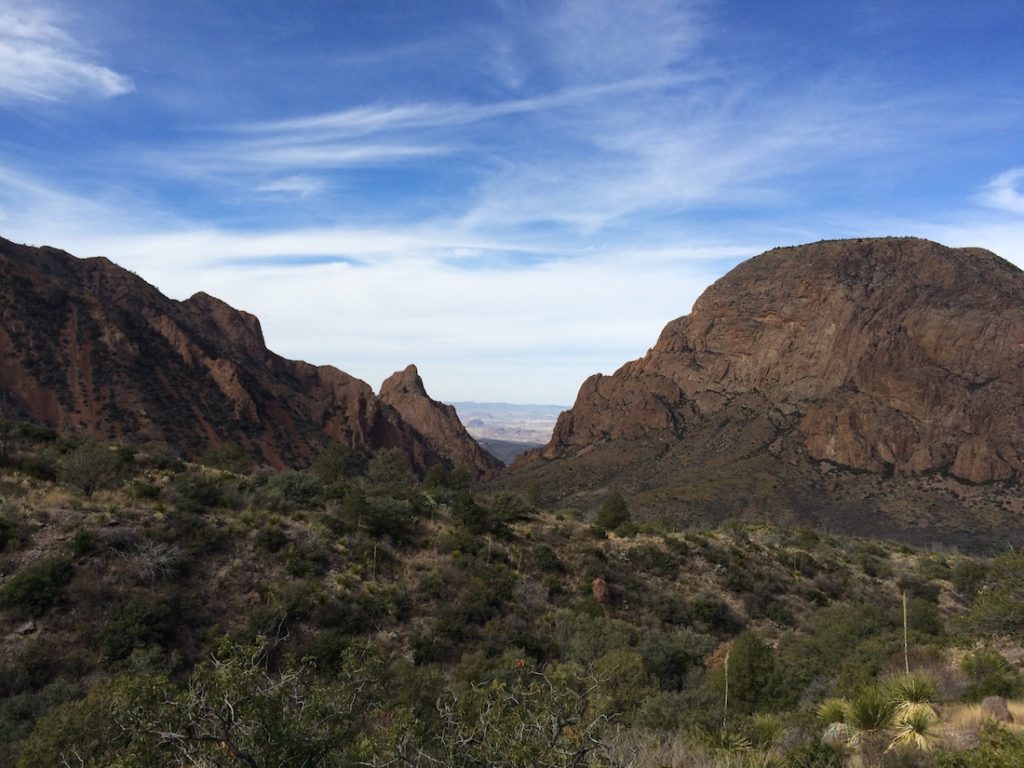
Texas is big; it takes a day to drive across it. Texas offers travelers lots of differnt terrain. From its desert landscape in the West to its UNESCO World Heritage Site in San Antonio to its eastern pine forests, visitors can visit a Texas National Park sites in Texas to learn more its history, its unique landscape and its flora and fauna. Texas also offers recreational areas the longest national seashore in the U.S and several lakes. Then there are the cultural sites to explore, like the LBJ Ranch and the newest site, an adobe school house in West Texas. Here are the National Parks of Texas.
17 Best National Parks in Texas
Big Bend National Park
Rio Grande Wild and Scenic River
Guadalupe Mountains National Park
San Antonio Missions National Historical Park
Padre Island National Seashore
Waco Mammoth National Monument
Big Thicket National Preserve
Fort Davis National Historic Site
Amistad National Recreation Area
Lake Meredith National Recreation Area
Blackwell School National Historic Site
Palo Alto Battlefield National Historical Park
Chamizal National Memorial
Alibates Flint Quarries National Monument
El Camino Real de los Tejas National Historic Trail
El Camino Real de Tierra Adentro National Historic Trail
Butterfield Overland Trail
Big Bend National Park
Big Bend National Park offers rugged western scenery that conjures up images of cowboys on horseback, riding on ridges. In a land where roadrunners outnumber the residents, Big Bend offers campers ample roaming room and a nightlife glittering with stars. It’s part of the Chihuahuan Desert, one of the four deserts in the U.S.
The Chisos Mountains, the only mountain range located entirely within a national park, offers a lodge and family-friendly trails. Big Bend National Park even offers its own border crossing so visitors can tour the tiny village of Bogillas del Carmen.
Big Bend offers rugged hiking where visitors might catch a glimpse of a mountain lion or a black bear, both residents of the park. Or float through remote scenery only accessible by a raft to meander through the sheer rock walls of the Santa Elena Canyon.
Find several visitor centers along with full-service campgrounds and lodging. It is best explored during the school year due to high temperatures during the summer.
Water lovers will want to float the Rio Grande Wild and Scenic River. To experience the river, visitors should arrange a guided trip through a local outfitter.
Located at the bend in West Texas at the border of the U.S. and Mexico. Texas Highway 118 and FM 170 enter Big Bend National Park. Open 24-hours a day and 365 days year. Seven-day pass is $30 and cash isn’t accepted at the park.
Bests of Big Bend National Park

Guadalupe Mountains National Park
Mountaineers know the Guadalupe Mountains since it’s the high point of Texas at 8,751 ft. With its developed trail for high pointers, it is a destination for high pointers to reach the summit and mark another peak off their list.
Guadalupe Mountains National Park offers dark skies and quiet hiking. Guadalupe Peak boasts a rugged mountain backdrop and over 80 miles of hiking trails, some accessible and over half open to horseback riding.
Located at 400 Pine Canyon, Salt Flat, just south of the New Mexico border and 110 miles east of El Paso. Open 24-hours a day and 365 days year. The Big Springs Visitor Center is open Monday to Sunday from 8 a.m. to 4:30 p.m. Admission is $10 a person for 16+ for a seven-day pass. Annual Passholders can bring in three people.
Best Places for Texas Wildflowers
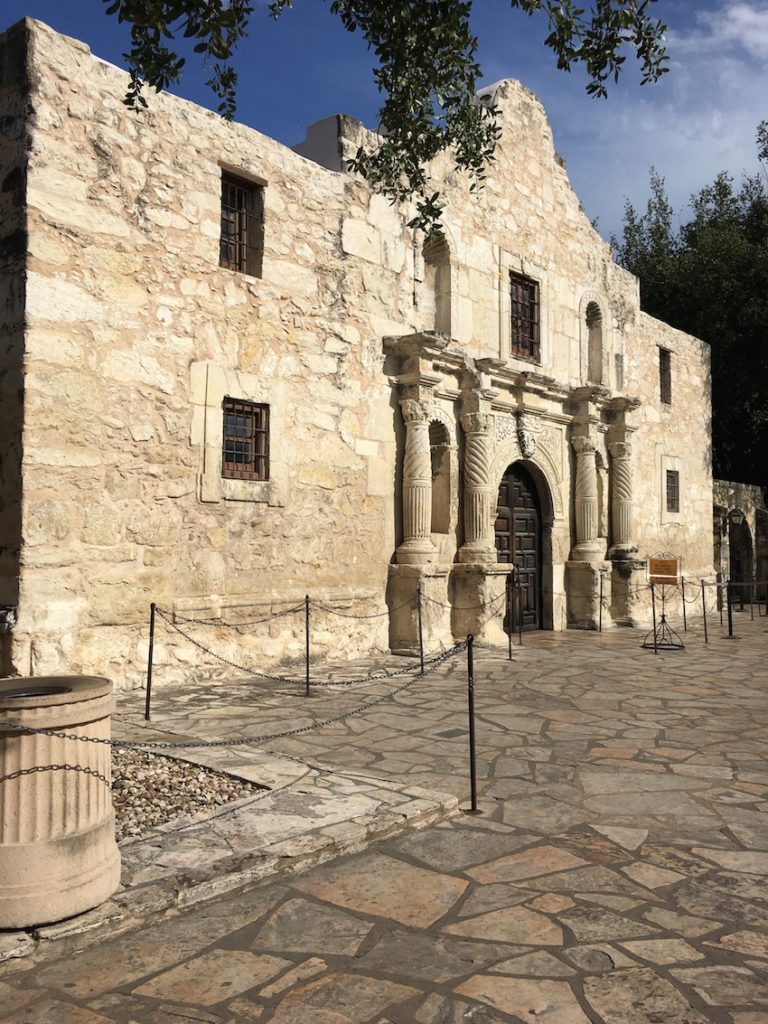
San Antonio Missions National Historical Park
The San Antonio Missions National Historical Park incorporates a line of missions, each about two miles from each other. It’s a UNESCO World Heritage Site, the only one in Texas.
The people of South Texas lived in peace for 10,000 years until the Apache raided in the 1700s. Then deadly diseases arrived from Mexico, killing many.
The newly built Spanish missions offered survival. However, protection meant a new language, a new religion and a new Spanish king.
The Alamo
Not in the San Antonio Missions NHP though a must for a visit to San Antonio. The northern-most mission and originally called the Mission San Antonio de Valero.
Mission Conception
The oldest unrestored stone church in the U.S. Located at 807 Mission Rd.
Mission San José
The largest mission and it includes the NPS Visitor Center. Fully restored in the 1930s as a Works Progress Administration project. Located at 6701 San José Dr.
Mission San Juan
Explore the landscaped grounds and see the historical crops. Located at 9101 Graf Rd.
Mission Espada
First mission to be built in 1690. Located at 10040 Espada Rd.
The Main Visitor Center is at 6701 San José Dr. Open from 9 a.m. to 5 p.m. The mission grounds are open from sunrise to sunset. The missions are active churches and may close for visitors due to church services, especially on the weekends. Free to enter.
Top 20+ Things You Must Do in San Antonio

Lyndon B. Johnson National Historical Park
The presidential park in Johnson City offers a complete history of the 36th American president the LBJ National Historical Park and offers several locations in and around Johnson City. The Johnson family came to central Texas to raise and drive cattle in the 1800s.
To learn more about LBJ, visitors should tour the Johnson Settlement, his boyhood home. Then head to the LBJ Ranch complete with the Texas White House and an airstrip. The LBJ State Park in the area as well, located west of the LBJ Ranch, a National Park Service site.
Start at the LBJ National Historical Park Visitor Center located at 100 Ladybird Lane, Johnson City. Open every day from 9 a.m. to 5 p.m. Grab a map and tour the nearby sites. Then head to the LBJ Ranch that’s a working cattle ranch with LBJ’s beloved long horns, located at 1472 State Park Road 52. Check it at the LBJ State Park Visitor Center for LBJ Ranch tour permits and open from 8 a.m. to 5 p.m. Free to enter.
Note: The Texas White House is closed for renovations in 2024. However, visitors can drive through the LBJ Ranch and stop at the school, cemetery, birthplace and show barn.
Top Things to Do in Fredericksburg
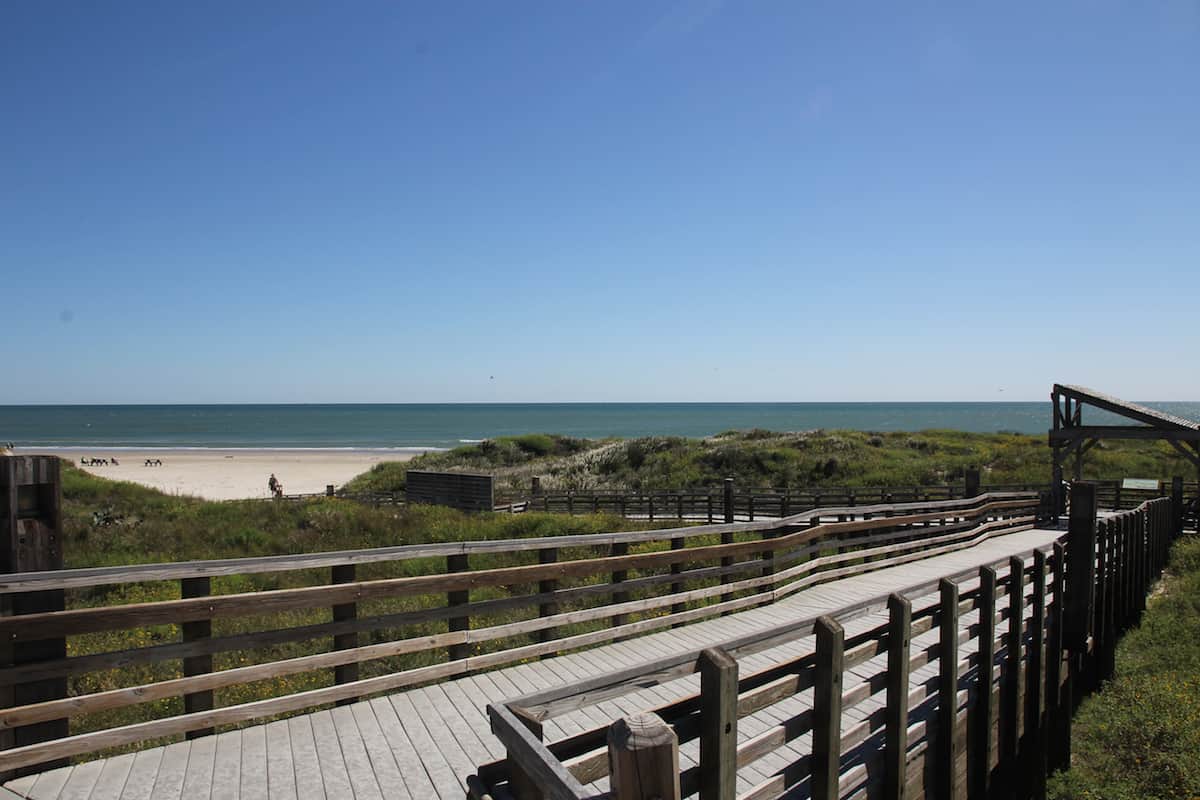
Padre Island National Seashore
As the longest section of undeveloped barrier island in the world, it protects 70 miles of the Gulf of Mexico shoreline and the Laguna Madre, a hypersaline lagoon. Padre Island National Seashore offers refuge for animals and a respite for animal lovers.
With over 130,000 acres of dunes, prairies and tidal flats for protection, turtles and birds take center stage. The Gulf of Mexico is home to five different species of sea turtles, all federally listed as endangered or threatened. And all find refuge on Padre Island, especially Kemp’s ridley.
Since the 1970s the National Park Service has recovered the nests and released the tiny turtle hatchlings along the shore. Kemp’s ridley sea turtles lay their eggs in shallow sand nests where predators and human disruption can destroy them. Watching the turtles crawl to the safety of the Gulf of Mexico, delights kids and adults alike.
The central flyway, a bird migration route, runs through Padre Island. So migrating birds, mainly Sandhill cranes, snow geese and redhead ducks, find a protected winter home. And 380 other bird species continue further south.
Located at the end of Park Road 22, south of Corpus Christi. Open 24-hours a day and 365 days year. There is a $10 day-use fee to enter. The Malaquite Visitor Center is open from 9 a.m. to 5 p.m. every day. Camping is available.
Best Spots to See in Corpus Christi
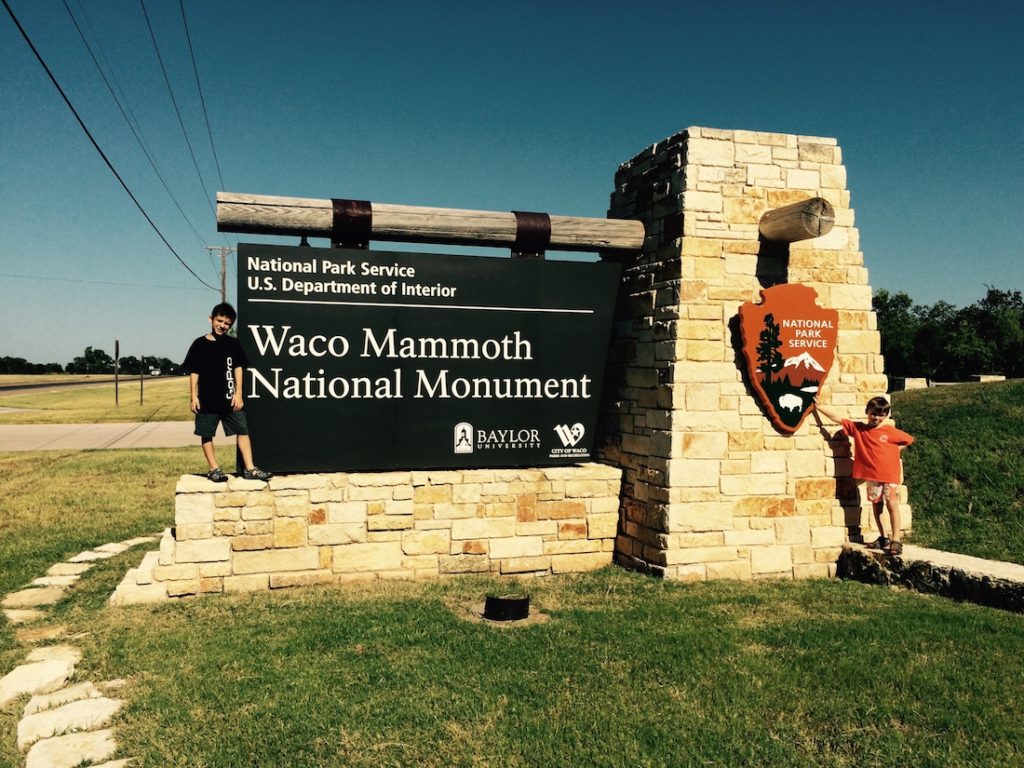
Waco Mammoth National Monument
Imagine a 14-foot tall and 20,000-pound furry elephant roaming around Waco. This is the only site to see a nursery herd of ice-age Columbian Mammoths. Take the guided tour to the indoor facility that protects the dig and the mammoth bones.
Located at 6220 Steinbeck Bend Dr. Open every day from 9 a.m. to 5 p.m. Free to enter the grounds though to see the mammoths a guided tour ticket is required. Adult admission is $6 and kids 4 to 17 are $5.
Top Things to Do in Waco
Big Thicket National Preserve
Protecting 113,000 acres across seven counties in East Texas, the Big Thicket National Preserve includes nine different ecosystems. With all the space, Big Thicket doesn’t offer many roads through the preserve.
The best way to explore is via paddling the Neches River, the numerous bayous, or creeks. Or hike along the 40 miles of hiking trails. Start your day at the Big Thicket National Preserve Visitor Center, open for Monday to Sunday from 9 a.m. to 5 p.m. Primitive camping available.
Located at 6044 FM 420, 30 miles north of Beaumont. Open 24-hours a day and 365 days year. Free to enter.
Top Things to Do in Beaumont

Fort Davis National Historic Site
Visit the best example of a southwest fort from the Indian Wars of 1854 to 1891. It protected emigrants and mail coaches on the Trans-Pecos portion of the San Antonio-El Paso Road and the Chihuahua Trail.
Located at 101 Lt. Flipper Dr., Fort Davis in West Texas. Open Monday to Sunday from 8 a.m. to 5 p.m. Seven-day pass is $20 for a vehicle or $10 per person.
Amistad National Recreation Area
The National Park Service protects areas used for recreation also. At the convergence of the Pecos River, the Rio Grande, and the Devils River, the Amistad reservoir offers boating and fishing, along with birdwatching and even hiking trails for pictographs, ancient stone pictures.
Located at 10477 Highway 90W, Del Rio in South Texas. Open 24-hours a day and 365 days year. The Amistad NRA Visitor Center is open Monday to Saturday from 8 a.m. to 4:30 p.m. Free to enter though it’s $4 a day to launch your boat.
Lake Meredith National Recreation Area
The 10,000-acre Lake Meredith offers lots of boating. Created by Sanford Dam on the Canadian River, enjoy hiking as well.
Located at 419 E. Broadway St. in Fritch, 30 miles north of Amarillo. Open 24-hours a day and 365 days year. Free
Blackwell School National Historic Site in Marfa
Built in 1909, the Blackwell School was part of an era of de facto segregation that ended in 1965. This site is new to the National Park Service and was designated in 2022. It offers an interpretive area outlining the stories of Hispanic students who attended school in the adobe building.
Located at 501 South Abbot St. Open Saturday and Sunday from noon to 4 p.m. It is free to enter.
Palo Alto Battlefield National Historical Park
Learn about the U.S.-Mexican War of 1846 to 1848. The Palo Alto Battle occurred in South Texas on May 8, 1846, and was the first battle of the war.
Located at 7200 Paredes Line Road, Brownsville. Open every day from 9 a.m. to 4:30 p.m. Free to enter.
Where to Find Dinosaurs in Texas
Chamizal National Memorial
For over a 100 years, the border of Texas and Mexico was disputed along the Rio Grande in El Paso. The Treaty of Hidalgo in 1848 made the Rio Grande the boundary between Mexico and the United States.
Then a flood moved the route of the Rio Grande in 1864. President John F. Kennedy and Mexican President Adolfo López Mateos finally settled the border dispute in 1963.
This 55-acre park is part of the disputed area. Find walking and biking trails along with a cultural center.
Located at 800 South Marcial Street, El Paso. Open daily from 7 a.m. to 9 p.m and from 7 a.m. to 7 p.m. during the winter. The Chamizal National Memorial Cultural Center is open Monday to Sunday from 10 a.m. to 5 p.m. Free to enter.
Alibates Flint Quarries National Monument
Back 15,000 years mammoth hunters knew about this area in the Panhandle of Texas since it was a source for arrowhead flint. It is also one of the least visited NPS sites in the U.S. and the first National Monument in Texas.
Located at 37084 Albates Rd., Potter County, 35 miles north of Amarillo. The visitor center is open every day from 9 a.m. to 4 p.m. Free to enter.
National Historic Trails of Texas
Two major trails originated out of Mexico City. One headed north to Santa Fe through El Paso. The other headed east to Louisiana.
El Camino Real de los Tejas National Historic Trail
The El Camino Real de los Tejas National Historic Trail retraces the trail through San Antonio and Austin to Natchitoches, Louisiana.
El Camino Real de Tierra Adentro National Historic Trail
The El Camino Real de Tierra Adentro National Historic Trail retraces the King’s Highway or Royal Road that runs between Texas and New Mexico.
Butterfield Overland Trail
The Butterfield Overland Trail retraces the 1857 route that John Butterfield built between the Eastern U.S. and the West. It travels through Missouri, Arkansas, Oklahoma, Arizona, New Mexico, California and Texas.
The National Historic Trails do not have a visitor center or charge a fee. Since the trails traverse private and public land, it’s essential to get permission from landowners before exploring.
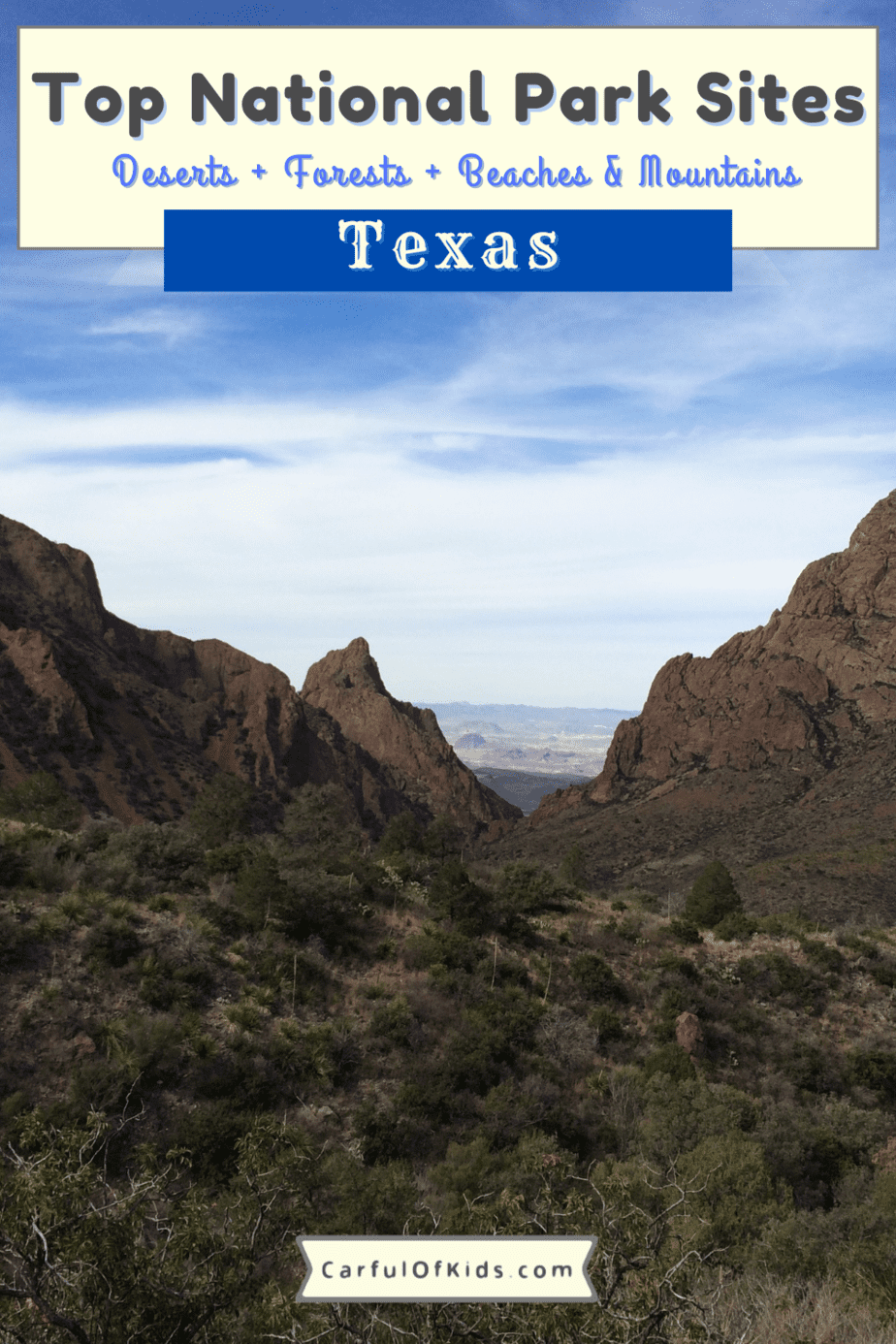


Comments are closed.